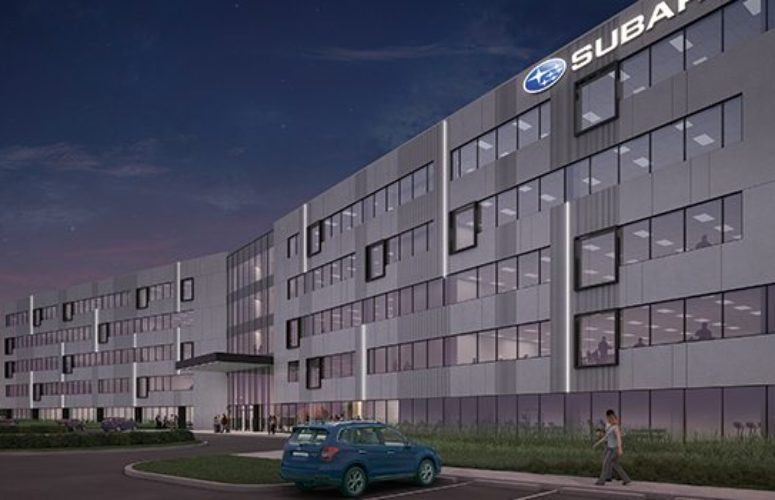
South Jersey Update: ‘2016 Looks to be a Great Year!’
Growing signs of optimism have firmly taken hold.
By Eric C. Peterson, Contributing Writer On Feb 22, 2016A year ago, the mood regarding South Jersey’s economy was mixed, with growing signs of optimism partially offset by some bad news. For 2016, the mood is upbeat.
“The general economic climate has improved, and we’re very encouraged,” says Marlene Asselta, president of the Southern New Jersey Development Council (SNJDC). “Our members are hiring people – always a good sign. We also do a request for proposals rundown, a compilation of available RFPs (primarily through public agencies) and we’re seeing that our counties, municipalities and businesses are more active in wanting to get work done.”
“The economy is continually improving,” concurs James Watson, director of the Cumberland County Improvement Authority. “It seemed as though we were close to last in the state to recover from the recession, but are growing strongly now,” he says, noting that unemployment in his county has dropped from 13 percent to 8 percent. “We’ve had over $80 million of investment this past year, creating more than 500 new jobs.” Among the growing sectors: health services, retail and manufacturing.
“The economy is doing great,” enthuses Edward Walters, Jr. of the Barnegat-based Walters Group. “People are buying homes and feeling confident enough in the economy and their personal financial situations. Job growth is also strong. People who left the construction industry back in 2008 when the market collapsed are starting to come back.”
The discussion begins in Atlantic City, however, where media reports remain mixed. The legislative push for the pending ballot question on casinos in New Jersey outside of Atlantic City isn’t sitting well. “We’re worried about that and vociferously oppose it,” says Debra DiLorenzo, president of the Chamber of Commerce of Southern New Jersey, herself an Atlantic County resident. She notes total casino revenue was up 3.5 percent in the first half of 2015, “a positive sign that Atlantic City can stabilize if given the opportunity.”
Enter James Wood, CEO of MeetAC who, in the wake of the closure of four casinos, agrees that the remaining eight “have done well with their numbers this year.” And it’s through MeetAC that optimism has broken through with a new focus on attracting non-gaming visitors, specifically convention goers. New developments have included Harrah’s Waterfront Conference Center, Resorts’ addition of 12,000 square feet of meeting space, and additional space at Borgata.
MeetAC has partnered with Harrah’s and the Atlantic City Convention Center and has been able to “retain a lot of existing customers by signing multi-year agreements,” Wood notes. Among the major efforts, Atlantic City will be hosting the TEAMS Conference and Expo, bringing more than 1,000 meeting planners to town, an obvious opportunity to “showcase the city.”
“We’re getting our name out there very aggressively,” he says. “We will have booked nearly $190 million in future business in 2015, have doubled the number of convention rooms booked, all of which has made a major economic impact and an increase in jobs.”
New jobs are coming in other directions, as well. DiLorenzo points to the impact of the state’s Economic Opportunity Act in attracting the Atlantic City Contact Center, a call center operating in a Claridge property, which initially created 100 jobs and is projected to generate more than 1,000 jobs by 2020.
“They are hiring former casino employees – the repurposing of people is what Atlantic city needs,” DiLorenzo says.
Yet there is some troubling news for the city. Besides the pending referendum on North Jersey gaming, Senate President Stephen Sweeney last month said he would introduce legislation for the state to take over Atlantic City’s finances. And while DiLorenzo mentioned that casino revenues were up for the first half of 2015, total casino revenues fell by 6.5 percent for the year, based on figures released last month by the state Division of Gaming Enforcement
On the bright side, the New Jersey Economic Development Authority approved $92 million in Economic Redevelopment and Growth Grants (ERG) for Island Campus Redevelopment Associates, LLC, ( a joint venture between New Brunswick’s Devco and AC Devco) to develop several blocks on the city’s south end to serve as a satellite campus for Stockton University.
Elsewhere in South Jersey, in Glassboro, work continues on Rowan Boulevard, the $300-million revitalization project bringing new retail, residential, hotel and conference space to the town. The project is the heart of a revitalization forming a new 20-acre corridor from the edge of the Rowan University campus to the center of the downtown. Most recently, construction of a new Route 322 roundabout provided a safer roadway between the campus and Rowan Boulevard.
And while Rowan Boulevard is a private development, the university has a stake in it, in the form of leased academic space, notes Joe Cardona, vice president, university relations. Rowan is also contributing mightily to the building boom, including utilizing its $117-million share of the Building for Our Future Bond Act to construct new campus facilities.
“We recently held the topping off ceremony for the new College of Business building, scheduled to open in December 2016, and the new engineering building, which will open in January 2017,” he says. “That will allow for the doubling of enrollments in both areas. We are also doing a public-private partnership for a 1,400-bed residence hall that will open in September, 2016.
“Our four pillars are access, economic development, cost and quality,” he explains. “The building program right now is about increasing access and quality.”
On the academic front, Rowan has instituted a 3+1 program that will enable students at Gloucester County and Burlington County colleges to spend three years at their respective institutions and one year at Rowan. The estimated cost of a bachelor’s degree through the program is about $25,000, or about half of what commuters spend at the state university.
Rowan’s reach beyond Glassboro includes a proposal to team with the Inspira Health Network for a new hospital on land the university owns in Woodbury. And that reach extends to Camden, where the Cooper Medical School, a partnership of Cooper Medical and Rowan, will graduate its first class this year. “It’s our commitment to Camden, to healthcare, and to medical education,” Cardona says.
Camden, meanwhile, is where many of the region’s biggest headlines are being generated. A driving force has been the tax credits under the Economic Opportunity Act, DiLorenzo explains. “For years, the incentives had gone to companies in North Jersey because their build-outs were so much bigger than what we were doing here. That legislation was the impetus, and the reaction from our companies has been tremendous.”
That’s not to say that large deals aren’t coming down the pike. The biggest news in late 2015 was Subaru of America’s groundbreaking for its new headquarters, located adjacent to Campbell Soup Co.’s world headquarters. It is the first new corporate headquarters in Knights Crossing, a master-planned urban town center being developed by Brandywine Realty Trust. Upon completion, Knights Crossing will consist of 1.4 million square feet of office space.
Subaru of America’s headquarters will total 250,000 square feet, along with a second 83,000-square-foot second building, more than doubling the size of the company’s current location in Cherry Hill, where it’s been since 1986. The project is being made possible by a Grow NJ award of almost $118 million, will have a net benefit of $167.9 million and involve 600 jobs.
On the Camden waterfront, meanwhile, Marlton-based Holtec International will build nuclear reactors and equipment in a new facility enabled by a $260-million tax package approved by the New Jersey Economic Development Authority (EDA). The project, which will generate nearly 400 jobs initially and many more long-term, is rising on 50 acres leased from the South Jersey Port Corp. at Broadway Terminal, notes Kevin Castagnola, executive director and CEO of SJPC. “This is a great opportunity to resurrect an old shipyard,” he says.
To support Camden’s new businesses, PSE&G is spending $55 million for electric and gas infrastructure upgrades. In addition to Subaru and Holtec, customers include AeroFarms, the Philadelphia 76ers and the Rutgers University School of Nursing. The upgrade includes higher capacity electric transformers, new electric distribution lines, relocating existing gas facilities and 3,000 feet of new gas main.
The city of Camden is also facilitating its rebound with the Promise Zone initiative, a federal designation addressing multiple community revitalization challenges and providing resources to meet those goals. For Camden, the goals are increased economic activity, improved educational opportunities, crime reduction, improved health and wellness, and increased affordable housing.
“Camden, after 50 years of trying to right itself, is now righted,” DiLorenzo says. “The mindset is that Camden’s a winner now – it’s back on the minds of people who make multi-million-dollar decisions to put their companies’ dollars there.”
The region-wide bounce-back has, of course, had a major impact on South Jersey’s real estate market, both from a transactional and construction standpoint. For construction, in addition to hosting Holtec on the Camden waterfront, the SJPC is also building out the first phase of the Port of Paulsboro. Castagnola anticipates a spring completion of phase one, followed by phase two, totaling 190 acres combined. “We will initially have 850 feet of berthing and eventually have 2,600 feet,” he says.
Occupancy is already slated, with Holt Logistics secured as the first customer, and NLMK, a slab company expected to import a million-and-a-half tons of slab to its 50-acre site. Port-wide, SJPC “had our largest steel year in history in 2014, and 2015 was poised to exceed that,” Castagnola says. “Much is related to construction, but a lot is also related to the canning and automobile industries.”
Commercial real estate owners and developers are seeing positive results as well, for the most part. According to James Whitesell of Delran-based Whitesell Construction, his company did 62 renewals amounting to 1.7 million square feet portfolio-wide in 2015, plus 10 expansions and 23 new leases. “Altogether, we’ve seen about 2.25 million square feet of leasing activity in the past year,” he says.
Among trends he sees in the industrial market: Smaller tenants re-entering the marketplace. “In 2008-2009, a lot of tenants in the 4,000-, 5,000-square-foot range, up to 10,000 square feet, pulled back and, in some cases, pulled out of the market,” Whitesell explains. “But now they’re back and we’re seeing nice activity.”
Another trend hasn’t quite reversed itself: Tenants pulling out of the market as a result of merger and acquisition activity, and competition with other states for those businesses. But for the many companies that remain, “We’re seeing tenants signing longer-term renewals,” he says. “There had been some hesitation as people were waiting to see what the economy was doing, but now we’re seeing terms getting longer, and not as many landlord concessions.” In other words, the one- and two-year renewals of the past several years are now more commonly three- and five-year renewals, according to Whitesell.
As far as the office market, “we’ve seen a bit of a changing landscape in ownership,” Whitesell notes. “Several of the REITs that have been in our area for some time are pulling back and pulling out.” One destination: “They’re looking at going back into the commercial business district markets.”
Still, “we’re seeing some decent activity in office right now,” he says. And longer lease terms are coming into play in this sector as well, with renewals similarly in the three- to five-year range. “On new deals, where there’s TI (digital transmission service) involved, all landlords are looking for longer commitments.
Key new deals completed by Whitesell include distribution centers for Burlington Coat Factory, 677,000 square feet, and Destination Maternity, 406,000 square feet, both award-winning projects, and both at the company’s Haines Center in Burlington. Renewals include Sports Authority’s 400,000 square feet at Haines Center. Office transactions include Lockheed Martin, renewing for 320,000 square feet in four buildings at Laurel Creek Corporate Center; and a new, 20,000-square-foot, long-term lease with New Jersey Schools Insurance Group at 6000 Midlantic Drive in Mt. Laurel.
And in general, Whitesell sees continued growth in the New Jersey Turnpike Exit 6 and Exit 6A submarket. “The market is now fully up against the 7A and 8A markets and is becoming more of a force.”
On the residential side, Hurricane Sandy opened up a new market for the Walters Group, which has a large portfolio of residential and commercial properties throughout South Jersey. The new division is called ReBuild, and its work is primarily on the barrier islands. “A lot is happening – we’ve sold 250 houses since the storm, and 90 houses in the past year alone,” Ed Walters says. “A lot of construction has been happening.”
Another focus for Walters is affordable housing. The company is currently building six communities in Ocean County, one in Mt. Laurel and one in Delanco. They range from 70-100 units, “and all the properties will have 4,000 to 5,000 people contacting us. That shows the lack of affordable housing in New Jersey,” says Walters, who notes that his company’s existing communities “are 100 percent occupied.”
Fueling business development across the region are state and local incentives, which continue to play a strong role. “The activities in each of our counties is so reliant on the leadership of the counties and their professionalism,” says Asselta. “Years ago, when municipalities and counties added more incentive programs, that provided another layer for businesses to look at in order to make a decision, and that’s paying off today.” She also credits the EDA for “doing big things.”
As an example of the innovative efforts on the county level, Cumberland County’s Jim Watson points to a redevelopment event hosting 30 municipalities and 30 developers; and a Bankers and Realtors Roundtable. The county also teamed with the Rutgers Food Innovation Center to host 12 Latin American food processing CEOs from Colombia, Mexico, Brazil, Peru and Chile, and met with an Israeli banking company about starting a manufacturing company in the county.
“We also have a very active social media campaign that has caused a UK manufacturer to contact us, and we are following up for possible sites,” Watson says.
Ultimately, it’s a think-outside-the-box philosophy that is bringing the economy back in South Jersey. As a result, “most of our companies are healthy and growing, and 2016 looks to be a great year right now,” Watson concludes.
Related Articles:






